SEO actions are usually implemented on a website to improve its ranking on Google. The American giant has since defined guidelines and limits to avoid abusive techniques – and does not hesitate to penalize websites that try to trick its ranking algorithm. If you go against Google’s rules and recommendations you expose yourself to sanctions: removed from the SERP, drop in traffic, downgrading…
In this article, we will explain the different SEO penalties that can impact your website on Google, how to identify them, and some tips to avoid them. Let’s get started!
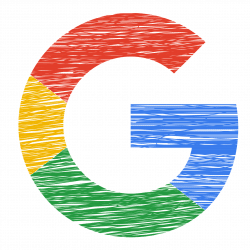
What is an SEO Google penalty?
When Google detects that the SEO of a website goes against the rules defined by the search engine, it sanctions the website with a penalty. Google penalties are usually the result of a major algorithm update that reshuffles the cards and upsets the entire SERP.
These sanctions often result in a change in the ranking of the website on the SERP, especially on the strategic keywords and expressions on which its action plan is based, sometimes leading the website to disappear entirely from rankings, or in the worst case, it can even be blacklisted. What are the consequences? You’ll notice a drop in traffic, leading to a decrease in visibility and sales…
Once the penalty is imposed, webmasters and SEO managers must fix the errors as quickly as possible and then simply wait for the website to get back to its initial position.
Most of the time, Google penalties are notified on the Search Console. Here are two examples of penalty notifications:
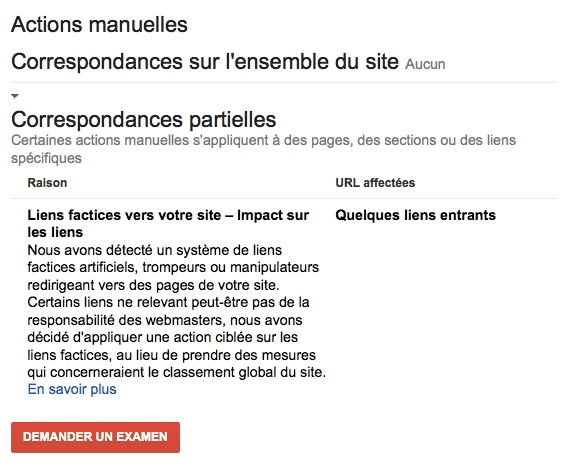
Website impacted by a penalty due to actions considered “spammy”.
What are the different types of penalties?
Google penalties can be either manual or generated directly by the algorithm and therefore automatic.
The manual penalty
As its name suggests, the manual penalty, which Google calls “manual action”, is often the result of a human decision. A member of Google’s “Quality Team” decides to apply a penalty to a website that has broken the rules. These Quality Raters also determine if a website belongs to the YMYL category that we talked about in our article on Medic update.
Since the search engine is constantly working on the development of its AI, it is possible that some penalties said to be manual are actually AI-based.
This type of penalty usually comes from the use of artificial backlinks or from a questionable netlinking strategy: practices on which Google is strict. In order to get back to your previous SERP ranking, you should apply for a review after having made the required fixes.
In 2017, nearly 6 million websites received a penalty notification on Google Search Console. This number is lower than in 2016, where 10 million websites received a penalty.
The algorithm penalty
The second type of penalty, the algorithm penalty, happens most of the time following an algorithm update or changes in one of Google’s filters.
Unlike manual penalties that are clearly notified on the Search Console, algorithm penalties are more difficult to detect because they are not clearly mentioned.
Most often, webmasters and SEOs can identify an algorithm penalty when witnessing a steep fall in organic traffic. By cross-checking the date of this drop in traffic with the date from an algorithm update and the communications made on social networks on the matter, it is possible to see the link between the two events…
What are the main Google penalties?
More than a dozen Google penalties currently exist, but we will focus on those that have a direct impact on SEO. Namely Panda, Penguin, and Fred algorithms that rule the world of SEO!
The Panda penalty
Behind this seemingly innocent name hides a strong penalty that has been impacting the SERPs since 2011. The mission of this Google filter is to identify low-quality websites and fight against spam by penalizing them accordingly. Luckily high-quality websites benefit from better rankings.
The Panda algorithm can target entire websites or specific pages. The sanctions can come from several elements, which makes identifying and fixing them more complex.
If your website is hit by the Panda algorithm, here are the main things to do with your SEO audit to identify the problem(s):
- website performance, especially loading time,
- keyword stuffing throughout the website (images, texts, metadata…),
- complex website architecture that prevents the pages from being properly indexed,
- cloaking: white text, hidden links, IP addresses,
- a high rate of duplicate content,
- too many links,
- poor quality pages and satellite websites.
This algorithm is known for its ruthlessness. Google hates imposture and attempts to deceive it, with user experience at the heart of its concerns.
The Penguin penalty
Implemented in April 2012, the Penguin algorithm is in charge of analyzing the link profile of a website by assessing its quality, relevance, and authenticity. The hunt for poor quality content and artificial backlinks is in full swing!

The Penguin algorithm analyzes several elements to identify if a website only uses netlinking for the benefit of its ranking:
- the website’s link profile: is it consistent? Are the links legitimate?
- link anchors: is the ratio of optimized / non-optimized and dofollow / nofollow anchors respected?
- Are the website’s backlinks of good quality? Have they been acquired over time consistently? Do they come from several categories of websites or do they on the contrary come from link exchanges or purchased sponsored links? Do the websites that point to the target website are topic-related?
As you can see, the spectrum covered by the Penguin algorithm remains very wide although essentially limited to netlinking. From the analysis of the anchor of the backlink itself to the review of referring domains, Penguin is constantly on the watch out.
Good backlinks are highly rewarded and play an important role in a website’s ranking on the SERP. Hence why Google specifically dedicates an algorithm to tracking artificial links!
Traffic curve of a website impacted by Penguin in mid-2014. Traffic was restored in Q1 2016:

The Fred penalty
The latest update that has impacted SEO is named Fred, a change from previous algorithms named after animals. However, this Google penalty has the same passion for content as Panda.
Once again, content quality is the most important thing for a website to stand out from the crowd. On the contrary, if your content is low-quality, your website’s ranking will be negatively impacted. But Fred tends to look at the quality of the content as a whole with the goal of rewarding websites that offer the best UX.
Fred’s first victims were unsurprisingly the websites that were full of ads. Those who chose to bet on affiliated ads, especially by using hundreds of links from the home page, were the first ones to be affected. It seems that Fred calculates the percentage of content v. ads and punishes those with a high ratio.
But ads aren’t the only things that make Fred’s algorithm go crazy. There’s also:
- essentially textual content, without graphics, images, videos, infographics and which could hamper readability,
- a poorly structured siloing that breaks the topic relevance of the website,
- abuse and/or mismanagement of the netlinking technique based on PBNs,
- websites whose only purpose is to generate revenue and considered spammy by robots.
If Google has deployed this new algorithm, it’s because users increasingly irritated by ads that negatively impact their user experience. Some websites even require users to watch ads before accessing the content they were looking for.
Most of the websites spared by Fred are niche and deal with very specific and targeted topics.
How do I know if my website has been hit by a Google penalty?
To find out if you’ve been hit by a Google penalty, whether manually or by an algorithm, several tools exist for you to know.
Track the changes in your rankings on the SERP
As said earlier, a sudden loss in rankings on one or more of your main keywords should immediately get your attention. Similarly, if your website has lost all its positions, it might be due to a penalty.
The downgrade of a website is the most common consequence of a Google penalty. If you’ve been testing the algorithm lately, you might want to worry a little…
To track your rankings, you can use Ahrefs, the most comprehensive tool on ht market.
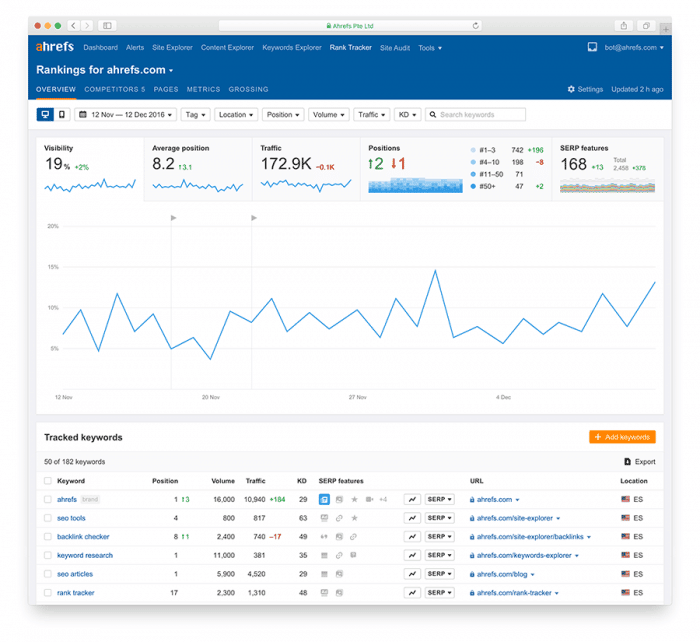
Source: Ahrefs
However, don’t forget that the SERP evolves every day. Indeed, if you are looking to rank your website on certain keywords, other companies might be trying to do the same thing. This is why a temporary loss of positions or a change can be quite normal. But it’s better to double check!
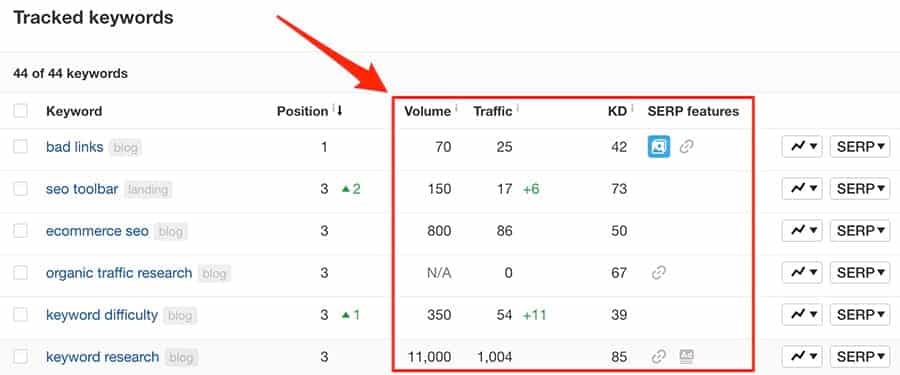
Source : Ahrefs
How to track your traffic?
Beyond monitoring your rankings, the evolution of organic traffic remains the most reliable indicator to detect if you’ve been hit by a penalty.
With Google Analytics, you can track your different audiences and compare them with a reference period. Be careful not to mistake a significant drop in traffic linked to a particular event (seasonal sales for example) with a penalty.
Also, it is important to check that this change in traffic is specific to Google, and does not extend to all search engines. Do not rule out the possibility of an error that has consequences on your SEO as a whole.
Monitor website performance with Search Console
The best ally of all SEO managers, Search Console will allow you to identify, in most cases, if your website has been subject to a manual penalty. Indeed, they are clearly stated in the Search Console, with Google even providing the reason for the penalty: fake link, hacked website, hidden text, spammy behavior, etc.
This tool also allows you to identify crawl errors for example. Moreover, if the Googlebots completely skip your website, this can mean that you’ve been hit by a penalty!
Always remember to check your sitemap for potential indexing issues.
Unfortunately, algorithm penalties are much more difficult to identify on the Search Console.
How to avoid a Goole penalty?
If removing a penalty requires a lot of work and sometimes days of investigation, the best solution is to do everything possible to avoid it!
Monitor changes in the SERP
The way search results are displayed and the ranking factors evolve regularly. To better understand the changes in algorithms, increased monitoring of the SERP and its changes can give you a good idea of what’s going on.
Tracking changes in rankings is in some ways the weather forecast of organic referencing and provides us with valuable indications on algorithm updates. If in the world SEO, everyone agrees to say that what was true yesterday will not necessarily be true tomorrow.
Based on keyword analysis and SERP results, the Moz tool provides a reliable SERP weather forecast and can even sometimes predict certain algorithm changes.
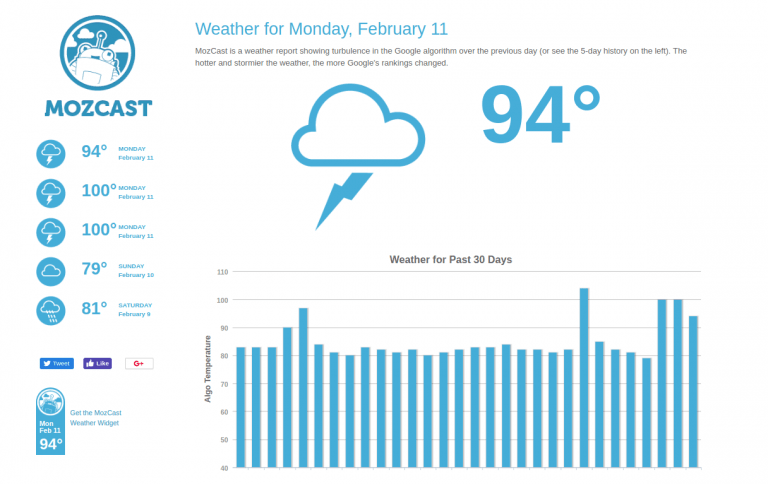
Source: Mozcast
You can also use Serpometer, a tool that rates the level of turbulence in the SERPs and allows you to know if your website has been impacted by a change in the algorithm.
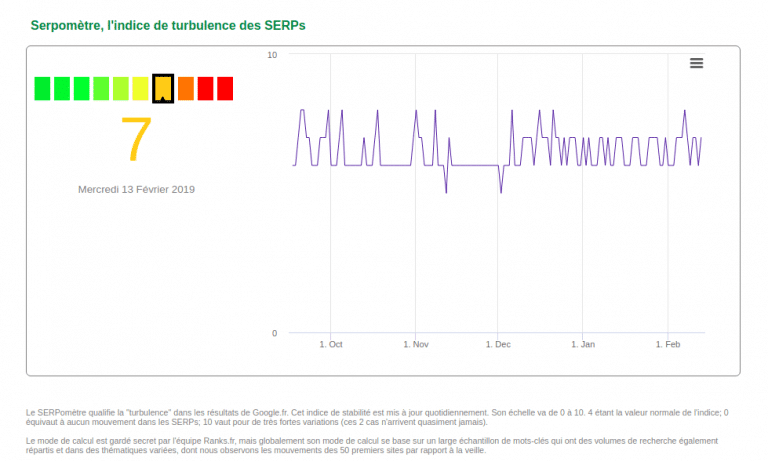
Source: Ranks
Analyze statistical anomalies
On a daily basis, you can use different tools such as Google Analytics, Ahrefs, and SEMrush to monitor the different indicators that would suggest important and abnormal changes. For more proactivity, you can set up alerts to be instantly notified if something goes wrong.
Certain statistical anomalies should immediately catch your attention:
- sudden loss of your long-standing backlinks,
- strong increase in the number of over-optimized anchors,
- unexpected Chinese or Russian backlinks,
- disruption of the link profile…
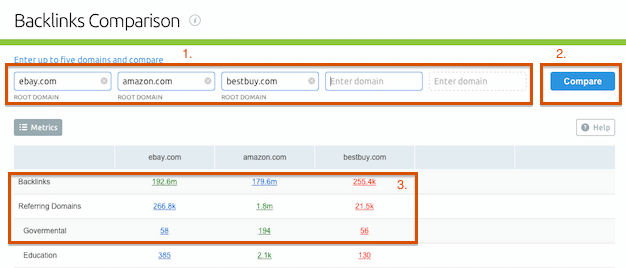
Source: SEMrush
When crawling your website, the Googlebots will do so with even more care if they see that there is turbulence on your website. These statistical anomalies are the kind of triggers that can set off an algorithm penalty. To avoid being penalized, you must act quickly and solve the issue as soon as possible.
Focus on content quality with snippets
Through Rich Snippets, you can easily expand your content and improve its quality. Product information, prices, inventory, or user reviews are useful data for the user searching for your products. In addition to increased visibility on the SERP, your content will have a better chance of meeting users’ expectations. All the efforts that tend towards the user’s satisfaction are highly valued by Google.
If these structured data or Rich Snippets are a good way to stand out, their abuse or misuse is heavily sanctioned!
For several years, Google has given particular attention to the use of these rich snippets and does not hesitate to punish those who do not follow the rules!
The good news is that it is easy to get your website back on track if it’s hit by a penalty due to rich snippets. In addition, this penalty-related problem is probably one of the easiest to identify.
Why avoid risky behaviors?
Every action that falls into the Black Hat SEO category – an SEO practice that goes against Google’s guidelines – can significantly increase the risk for your website to be hit by a penalty.
Whether you use Black Hat techniques or you are the target of Negative SEO actions from a third party, the result will be the same: penalties!
If a penalty already has a terrible negative impact on your business, it is essential to avoid being blacklisted by Google at all costs. The Google blacklist gathers all the websites that have been deindexed due to the use of bad practices: link farms, abusive netlinking, cloaking, keyword over-optimization, artificial content creation of content…
In the end, Google will always find you if you try to trick it.
What to do in case of a Google penalty?
You have done everything to avoid it, and yet you’ve been hit by a penalty. The good thing is that the actions to be taken to get out of it will be beneficial for your website as a whole in the long term. The bad thing is that you have a lot of work to do!
The first thing to do is to check the Search Console: is it a manual or algorithm penalty? In the first case, you will quite precisely know which elements you need to work on to fix the issue. In the second case, the issue is not as clearly defined, you will need to cross-reference your data.
To get out of a Penguin penalty, you must precisely analyze each and every link of the sanctioned website, list and remove the problem makers and verify all others. The most reliable solution to restore your reputation with Penguin is to do a deep cleaning of your backlinks and implement a high-quality netlinking strategy.
To fix a Panda penalty, the work to do is a bit more complex, especially if the entire website is affected. A page-by-page analysis will allow you to identify the weaknesses in terms of content and architecture in order to determine what and how to work on fixing the issues. The most common solution consists of enriching the website with quality content that targets the real expectations of users.
When a penalty of any kind occurs, the most difficult step is to identify exactly which element(s) to act on. You need to have the resources and expertise to deal with and solve the issues. You’ve been hit by a penalty and you don’t know how to fix it? Our SEO experts are here to help you.
What about 2019?
Google works hard to implement filters and algorithms that penalize websites that break the rules of the platform and try to deceive users. On the other hand, the Mountain View company does not hide the fact that it values those who follow the guidelines. As trends change and new search-related issues arise, Google’s search engine is changing. Its objective remains the same: to satisfy user queries as much as possible with ever more relevant results.
As always, keep an eye on SEO trends and regularly monitor your website’s indicators to increase your chances of quickly identifying a Google penalty when it happens. It’s important to react quickly and well, the longer you wait, the harder it is to fix the issues and get back to where you were before the penalty.
If you follow Google’s best practices, on having natural links, a website combining great user experience and performance, with high-quality content, then you have (almost) nothing to worry about!
